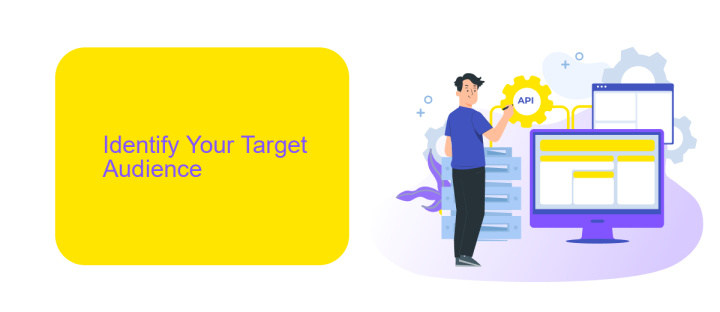How to Build a No-Code Platform
Building a no-code platform can revolutionize the way businesses and individuals develop software, enabling even those with no programming experience to create functional applications. This guide will walk you through the essential steps to set up your own no-code platform, from choosing the right tools to deploying your first project, making technology more accessible than ever before.
Introduction
Building a no-code platform has become an essential skill in today's fast-paced digital landscape. These platforms empower individuals and businesses to create applications without the need for extensive programming knowledge. By leveraging intuitive interfaces and pre-built components, users can streamline their workflows and bring ideas to life quickly and efficiently.
- Accessibility: No-code platforms democratize app development, making it accessible to non-developers.
- Speed: Rapid prototyping and deployment allow for quicker time-to-market.
- Cost-Efficiency: Reduces the need for hiring specialized developers, saving on development costs.
Integrations are a critical aspect of no-code platforms, enabling seamless connectivity between various tools and services. For instance, ApiX-Drive facilitates easy integrations by allowing users to connect different applications without writing a single line of code. This enhances the platform's functionality, making it versatile and adaptable to various business needs. As a result, building a no-code platform not only simplifies development but also ensures robust and scalable solutions.
Identify Your Target Audience

Understanding your target audience is crucial when building a no-code platform. Start by identifying the specific needs and pain points of potential users. Are they small business owners looking to streamline operations, or are they developers seeking to speed up prototyping? Conduct surveys, interviews, and market research to gather insights about their preferences, challenges, and desired features. This data will help you create a user-centric platform that addresses real-world problems effectively.
Segment your audience based on factors such as industry, technical expertise, and business size. Tailor your platform’s features and integrations accordingly. For instance, if your audience includes businesses needing seamless data integration, consider integrating tools like ApiX-Drive to automate workflows and enhance productivity. By understanding and addressing the unique requirements of each segment, you can build a no-code platform that not only attracts but also retains a diverse range of users.
Choose the Right Tools and Technologies

When building a no-code platform, selecting the right tools and technologies is crucial for success. The tools you choose will define the capabilities, scalability, and user experience of your platform. Here’s a guide to help you make informed decisions:
- Identify Your Platform's Core Features: Determine the essential features your platform needs, such as drag-and-drop interfaces, user authentication, and data storage.
- Evaluate No-Code Development Tools: Research and compare popular no-code development tools like Bubble, Adalo, and Webflow for building your platform’s frontend and backend.
- Consider Integration Services: Use services like ApiX-Drive to seamlessly integrate various applications and automate workflows, enhancing your platform's functionality.
- Ensure Scalability: Choose tools and technologies that can grow with your user base and handle increasing data and traffic loads.
- Focus on User Experience: Select tools that offer intuitive design capabilities and ensure a smooth, user-friendly experience for your end-users.
By carefully selecting the right tools and technologies, you can build a robust and scalable no-code platform that meets your users' needs and stands the test of time. Take the time to research and test different options to ensure you make the best choices for your project.
Develop and Test Your Platform

Once you have designed the core features of your no-code platform, the next step is to develop and test it thoroughly. Start by setting up a development environment where you can build and iterate on your platform without affecting the live version. This environment will allow you to experiment with different functionalities and workflows safely.
Testing is crucial to ensure that your platform operates smoothly and meets user expectations. Conduct both manual and automated tests to identify any bugs or performance issues. Pay special attention to user interface and user experience elements, as these are critical for the success of any no-code platform.
- Set up a staging environment for testing.
- Implement automated testing scripts.
- Conduct user acceptance testing (UAT).
- Use tools like ApiX-Drive for seamless integrations.
ApiX-Drive can be particularly useful for integrating various third-party services into your platform without writing any code. This tool simplifies the process of connecting different applications, ensuring that your platform can communicate effectively with other software solutions. Once all tests are completed and issues are resolved, you can confidently move forward with launching your no-code platform.
- Automate the work of an online store or landing
- Empower through integration
- Don't spend money on programmers and integrators
- Save time by automating routine tasks
Launch and Market Your Platform
Once your no-code platform is fully developed, the next crucial step is to launch it effectively. Begin by conducting a beta test with a select group of users to gather valuable feedback and identify any potential issues. Make sure to refine your platform based on this feedback to ensure a smooth user experience. Additionally, create comprehensive documentation and tutorials to help users get started quickly and efficiently. Utilize social media channels, email marketing, and online communities to announce the launch and generate buzz around your platform.
Marketing your platform is equally important for its success. Leverage content marketing by publishing blog posts, case studies, and user testimonials to showcase the benefits of your platform. Collaborate with influencers and industry experts to reach a broader audience. Consider integrating with services like ApiX-Drive to automate workflows and enhance user experience, making your platform more appealing. Offer free trials or limited-time discounts to attract new users and encourage word-of-mouth referrals. Continuously engage with your user base through regular updates and support to build a loyal community around your platform.
FAQ
What is a no-code platform?
What are the benefits of using a no-code platform?
Can I integrate third-party services with a no-code platform?
Is it secure to use a no-code platform for business applications?
Can no-code platforms handle complex applications?
Do you want to achieve your goals in business, career and life faster and better? Do it with ApiX-Drive – a tool that will remove a significant part of the routine from workflows and free up additional time to achieve your goals. Test the capabilities of Apix-Drive for free – see for yourself the effectiveness of the tool.


